A natural bug repellent that’s as effective as DEET and defeats mosquitoes, ants, and ticks? That’s the beauty of our beautyberry insect repellent recipe!
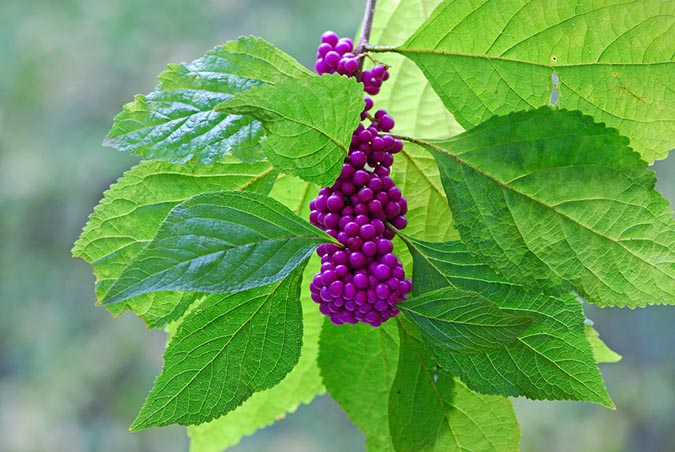
This Natural Bug Repellent Is As Effective As DEET!
Beautyberry plants have long been used as a natural bug repellent to combat mosquitoes, biting flies, ticks, and other pests. Modern studies have validated this tradition, demonstrating compounds within the plant to be as effective as DEET.1)Carroll, John F., Charles L. Cantrell, Jerome A. Klun, and Matthew Kramer. “Repellency of Two Terpenoid Compounds Isolated from Callicarpa Americana (Lamiaceae) against Ixodes Scapularis and Amblyomma Americanum Ticks.” Experimental and Applied Acarology41, no. 3 (2007): 215-24. doi:10.1007/s10493-007-9057-2.
I often take a few leaves, crush them, and rub them on myself when I go into the woods. So when my wife complained about the mosquitoes eating her up each time she went out into the yard, my first thought was beautyberry.
I’ve been drawing on my foraging and herbalist skills to experiment with this plant. Read on, and I will show you how to both identify the beautyberry plant and use it to create a highly effective natural bug repellent.
Wildcrafting the American Beautyberry
The beautyberry genus (Callicarpa) contains perennial shrubs and small trees. They tend to be evergreen in tropical regions and deciduous in temperate climates. As such, they may die back to ground level each year in their coldest tolerated zones.
I’ll be focusing here on identifying American beautyberry (Callicarpa americana). It’s the most well-researched for our bug-repelling purposes.
Get the skills you need to survive (and even thrive) during a long-term emergency situation with our popular Off-Grid Survival Toolkit, featuring 27 essential, survival-related presentations and 7 bonus eBooks!
Japanese beautyberry (Callicarpa japonica) also contains the main constituents that act as a natural bug repellent. It’s likely that many others in this genus do as well.
Identifying Beautyberry to Use as a Natural Bug Repellent
American beautyberry is sometimes called French mulberry. As it turns out, it’s neither French nor a mulberry. It’s actually a member of the mint family.
Beautyberry has opposite leaves, as any good mint would, but seems to lack the square stem common to this family.
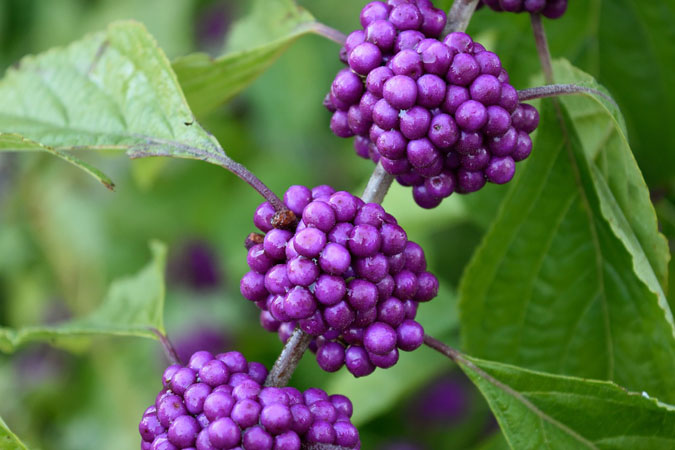
American beautyberry is sometimes called French mulberry.
Its most visually striking feature is its fruit. After some rather inconspicuous flowers, beautyberry will develop berries in a cluster around the stem at the same point where the leaves are growing.
The berries are first green, then turn bright pink or magenta. They are also rather glossy—almost metallic in appearance. This plant is really easy to identify while it’s fruiting.
You May Also Enjoy:
“How to Make Bone Broth in 5 Easy Steps + Benefits & Uses”
“Meat Rabbits: Raise Half Your Protein in 10 Minutes Per Day”
Once you’ve identified a fruiting beautyberry, pick off a few leaves. Crush them in your hand, and smell them. The distinctive smell will allow you to positively identify beautyberry plants at any time, with or without the flashy fruit.
Finding the Beautyberry Bush
American beautyberry can resist drought conditions fairly well. It’s also said to prefer direct sunlight. I usually come across it in the middle of the woods in moderate to heavy shade, however. (In this instance, it’s okay to ignore the plant books.)
The Native Growing Regions of Beautyberries
Beautyberries, as a genus, are native to Australia, Madagascar, east and southeast Asia, South America, and the southeastern quadrant of North America.
American beautyberry is the only species native to the United States. The Japanese beautyberry has reportedly naturalized in some places though.
If you start with Oklahoma and include all points south and east of there, you’ll have a good idea of the American beautyberry’s native growing area.
What If You Live Outside Beautyberry’s Native Region?
Don’t worry if you live outside of this area. I’ve got some options to help you still take advantage of my beautyberry insect repellent recipe.
First off, this growing area is based off of the USDA website maps, which don’t have the greatest reputation for their pinpoint accuracy.
Second, if beautyberries don’t grow around you, you can still buy them from plant nurseries and grow them as far north as Zone 6. Japanese beautyberry is hardy to Zone 5.
David the Good has a lot of great information to push this even further. You can check out his book, Push the Zone, or read some of his zone-pushing articles here on The Grow Network.
You May Also Enjoy:
“Zone-Pushing Tips for Growing Ginger and Turmeric in Cold Climates”
“Growing Bananas and Other Tropical Delights Beyond the Tropics”
If all else fails, you can follow the recipe below, but substitute other aromatic members of the mint family in place of beautyberry. Strongly scented mints tend to work well as a natural bug repellent. You could also use onions or garlic if you don’t mind the smell.
Using the Fruit As More Than Mosquito Repellent
Yes, the American beautyberry’s berries do look incredibly poisonous. They’re actually quite edible, however. The taste is rather bland though they can be used to create a flavorful tea or a colorful and unique jelly.
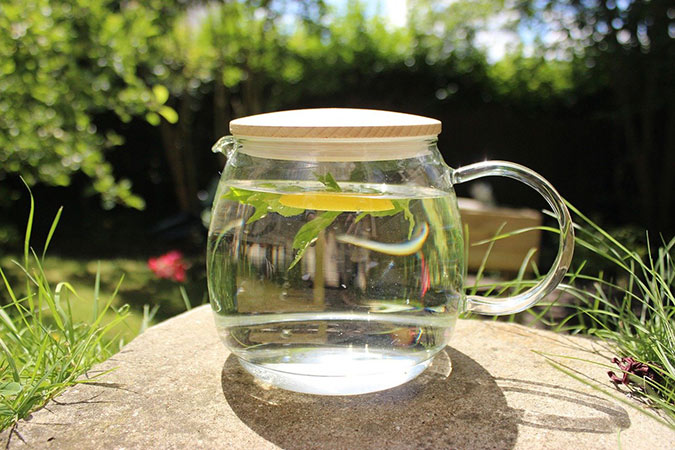
Image by Jenesuispas from Pixabay
The berries are also exceedingly easy to harvest in quantity. Just rub your fingers through a cluster and hold a bowl or open bag below them. You’ll have a sizeable quantity in no time.
Please note that the berries of other beautyberry species may or may not be edible.
Let’s Make the Natural Bug Repellent Already!
Beautyberry Insect Repellent Recipe
- Start by harvesting some fresh leaves. The exact amount is up to you. Fresh leaves are important though. The most active compounds—the ones that make beautyberry such an effective natural bug repellent—are volatile terpenoid compounds (callicarpenal and intermedeol). These tend to evaporate as the leaves dry out. Some of the compounds remain in the dried leaves, but fresh leaves are much more effective.
- Stuff the leaves into a mason jar or other container. Push them down to remove any unnecessary air space. Next, pour some cheap vodka or other booze into the glass, and fill it up half as much as you did with the leaves. It doesn’t matter what type of alcohol you use, as long as it’s around 100 proof (50% or more). You could even use rubbing alcohol since we’re not going to eat this stuff. But be sure to label the jar “Do Not Eat!” when we’re all through.
- Shake up the jar and let it set for a few hours. Overnight works great. (You know what else works great? Screw the lid on the top first. THEN, shake up the jar. That works best for me.)
- Once the alcohol and leaf mixture has set, pour it all into a blender and add the oil of your choice. I like coconut oil. A good ratio is 7 parts oil to 1 part herb/alcohol mixture. Blend it all together until the sides of the blender get warm. This should take about 3 minutes or so.
- Pour it all out into a jelly straining bag or other mesh material. It’s best to do this over a bowl. (Otherwise, you’ll spend the rest of the morning cleaning beautyberry-infused coconut oil off of your countertops.) Squeeze the bag to get all of the oil out. Compost any plant material left in the bag.
You May Also Enjoy:
“HomeGrown Herbalist 01 – Echinacea: General Properties and Uses for Snake Bites”
To Make a Salve, Go One Step Further
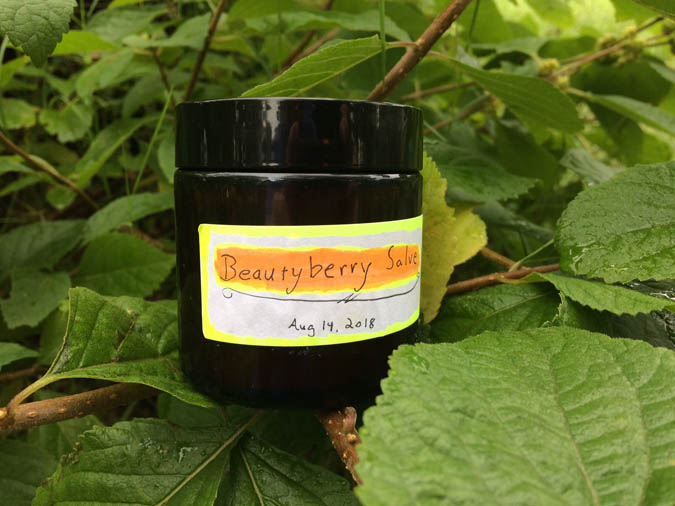
Use our beautyberry insect repellent recipe to make your own highly effective salve.
You can stop here, if you like. It’s already a very effective natural bug repellent at this stage. Just pour the infused oil into a jar and seal it up.
However, oils are just too oily for me. So let’s go on and make this into a salve.
- Pour the infused oil into the top of a double boiler and heat it up. For every cup of infused oil, add 1 ounce (weight) of beeswax to the mix.
- When the beeswax melts, and you’ve stirred it all in, you can seal your natural bug repellent up and store it for later.
- You can also add essential oils or other goodies before the salve starts to cool and solidify.
Or You Can Make a Cold-Infusion Repellent
One other option for your natural bug repellent is to make a cold infusion with beautyberry leaves and water. This is less effective than the above method because the active components are more alcohol- and oil-soluble than water-soluble. However, a cold infusion is much easier to make and involves less cleanup.
You May Also Enjoy:
“The 7 Stages of Home Medicine Makers”
“How to Make Your Own Tinctures, Salves, and Essential Oils”
For this method, put the beautyberry leaves in your blender. Add just enough water to get them to blend properly. After a few pulses, pour everything into a glass jar, put on the lid, and let it sit on the counter overnight.
In the morning, pour everything into a straining bag, as with the above method. Now pour the strained liquid into a spray bottle.
Beautyberry Is Prized As Much More Than a Natural Bug Repellent
While beautyberries are well known for repelling ticks, mosquitoes, and ants (including fire ants), I’d hate to leave you thinking that’s all they are good for.2)Carroll, John F., Charles L. Cantrell, Jerome A. Klun, and Matthew Kramer. “Repellency of Two Terpenoid Compounds Isolated from Callicarpa Americana (Lamiaceae) against Ixodes Scapularis and Amblyomma Americanum Ticks.” Experimental and Applied Acarology41, no. 3 (2007): 215-24. doi:10.1007/s10493-007-9057-2.3)Chen, J., C. L. Cantrell, S. O. Duke, and M. L. Allen. “Repellency of Callicarpenal and Intermedeol Against Workers of Imported Fire Ants (Hymenoptera: Formicidae).” Journal of Economic Entomology101, no. 2 (2008): 265-71. doi:10.1093/jee/101.2.265. Allow me to share with you some of the amazing benefits of the various beautyberry species.
Cytotoxic and Antibacterial Properties
Several beautyberry species have been shown in lab tests to be cytotoxic to various human cancer cell lines.4)”Chemical Constituents from Callicarpa Nudiflora and Their Cytotoxic Activities.” China Journal of Chinese Materia Medica, 2014. doi:10.4268/cjcmm20141618.5)Liu, Yuan-Wei, Yuan-Bin Cheng, Chia-Ching Liaw, Chung-Hsiung Chen, Jih-Hwa Guh, Tsong-Long Hwang, Ji-Shu Tsai, Won-Bo Wang, and Ya-Ching Shen. “Bioactive Diterpenes from Callicarpa Longissima.” Journal of Natural Products75, no. 4 (2012): 689-93. doi:10.1021/np200932k.6)Shameli, Kamyar, Mansor Bin Ahmad, Emad A. Jaffar Al-Mulla, Nor Azowa Ibrahim, Parvaneh Shabanzadeh, Abdolhossein Rustaiyan, Yadollah Abdollahi, Samira Bagheri, Sanaz Abdolmohammadi, Muhammad Sani Usman, and Mohammed Zidan. “Green Biosynthesis of Silver Nanoparticles Using Callicarpa Maingayi Stem Bark Extraction.” Molecules17, no. 7 (2012): 8506-517. doi:10.3390/molecules17078506.7)Jones, William P., Tatiana Lobo-Echeverri, Qiuwen Mi, Hee-Byung Chai, Djaja D. Soejarto, Geoffrey A. Cordell, Steven M. Swanson, and A. Douglas Kinghorn. “Cytotoxic Constituents from the Fruiting Branches OfCallicarpa AmericanaCollected in Southern Florida⊥,1.” Journal of Natural Products70, no. 3 (2007): 372-77. doi:10.1021/np060534z. Among these were prostate cancers, breast cancers, and leukemia. The species involved with these studies were American beautyberry, Callicarpa maingayi, Callicarpa nudiflora, and white-fruited Asian beautyberry (Callicarpa longissima).
You May Also Enjoy:
“15 Natural Antibiotic Alternatives”
Callicarpa farinosa has exhibited antibacterial activity against methicillin-resistant Staphylococcus aureas (MRSA). This is great news for those of us concerned about the growing crisis of antibiotic-resistant bacteria.8)Chung, Pooi Yin, Lip Yong Chung, and Parasakthi Navaratnam. “Potential Targets by Pentacyclic Triterpenoids from Callicarpa Farinosa against Methicillin-resistant and Sensitive Staphylococcus Aureus.” Fitoterapia94 (2014): 48-54. doi:10.1016/j.fitote.2014.01.026.
Japanese beautyberry was shown to be highly effective against two common foodborne pathogens, Bacillus cereus and Salmonella typhimurium.9)Kim, Yong-Suk, and Dong-Hwa Shin. “Volatile Constituents from the Leaves OfCallicarpa JaponicaThunb. and Their Antibacterial Activities.” Journal of Agricultural and Food Chemistry52, no. 4 (2004): 781-87. doi:10.1021/jf034936d.
Antiviral and Antioxidant Benefits
Continuing with the antimicrobial trend, Japanese beautyberry was shown to have a high inhibitory effect against the herpes simplex virus.10)Hayashi, K., T. Hayashi, H. Otsuka, and Y. Takeda. “Antiviral Activity of 5,6,7-trimethoxyflavone and Its Potentiation of the Antiherpes Activity of Acyclovir.” Journal of Antimicrobial Chemotherapy39, no. 6 (1997): 821-24. doi:10.1093/jac/39.6.821. In the same study, lab tests indicated that it was effective at inhibiting replication of the poliovirus.
In another study, Kwangtung beautyberry (Callicarpa kwangtungensis) was shown to have antimicrobial properties against Staphylococcus aureus, E. coli, and Candida.11)Jia, An & Yang, Yi-Fang & Kong, De-Yun & Xiao, Cheng-Cheng. “[GC-MS analysis of chemical constituents of essential oil from Callicarpa kwangtungensis and their antimicrobial activity].” Zhong yao cai = Zhongyaocai = Journal of Chinese medicinal materials. 35. 415-8. (2012).
You May Also Enjoy:
“10 Incredibly Powerful Antiviral Herbs”
Multiple species of beautyberry have also shown strong antioxidant and protective activities in lab tests.12)Kawamura, T., T. Momozane, M. Sanosaka, K. Sugimura, O. Iida, H. Fuchino, S. Funaki, Y. Shintani, M. Inoue, M. Minami, N. Kawahara, H. Takemori, and M. Okumura. “Carnosol Is a Potent Lung Protective Agent: Experimental Study on Mice.” Transplantation Proceedings47, no. 6 (2015): 1657-661. doi:10.1016/j.transproceed.2015.05.004.13)Junejo, Julfikar Ali, Mithun Rudrapal, Lalit Mohan Nainwal, and Kamaruz Zaman. “Antidiabetic Activity of Hydro-alcoholic Stem Bark Extract of Callicarpa Arborea Roxb. with Antioxidant Potential in Diabetic Rats.” Biomedicine & Pharmacotherapy95 (2017): 84-94. doi:10.1016/j.biopha.2017.08.032. In one test with mice, purple beautyberry (Callicarpa dichotoma) was shown to have “anti-amnesic activity.” This could signal a future in treatments for Alzheimer’s patients.14)Lee, Ki Yong, Eun Ju Jeong, Heum-Sook Lee, and Young Choong Kim. “Acteoside of Callicarpa Dichotoma Attenuates Scopolamine-Induced Memory Impairments.” Biological & Pharmaceutical Bulletin29, no. 1 (2006): 71-74. doi:10.1248/bpb.29.71.
What Do You Think?
That wraps up my spiel on beautyberry and its use as a natural bug repellent. Do you have any beautyberry growing around you? Have you used it to ward off pests? What’s your favorite natural way to repel insects? Let me know in the comments.
_____________________
Psst! Our Lawyer Wants You to Read This Big, Bad Medical Disclaimer –> The contents of this article, made available via The Grow Network (TGN), are for informational purposes only and do not constitute medical advice; the content is not intended to be a substitute for professional medical advice, diagnosis, or treatment. Always seek the advice of a qualified health care provider with any questions you may have regarding a medical condition. If you think you may be suffering from any medical condition, you should seek immediate medical attention. You should never delay seeking medical advice, disregard medical advice, or discontinue medical treatment because of information provided by TGN. Reliance on any information provided by this article is solely at your own risk. And, of course, never eat a wild plant without first checking with a local expert.
The Grow Network is a participant in the Amazon Services LLC Associates Program, an affiliate program designed to provide a means for our team to earn fees for recommending our favorite products! We may earn a small commission, at no additional cost to you, should you purchase an item after clicking one of our links. Thanks for supporting TGN!

Scott Sexton is a TGN Trailblazer, a highly experimental gardener, an unrelenting weed-eater, and a largely non-profit herbalist (much to his wife’s chagrin). When Scott is not teaching foraging classes, testing out theories in the garden, or grazing in the forest, he can be found at his Facebook page, “A Forager’s Guide to the Zombie Apocalypse.”
References
| ↑1, ↑2 | Carroll, John F., Charles L. Cantrell, Jerome A. Klun, and Matthew Kramer. “Repellency of Two Terpenoid Compounds Isolated from Callicarpa Americana (Lamiaceae) against Ixodes Scapularis and Amblyomma Americanum Ticks.” Experimental and Applied Acarology41, no. 3 (2007): 215-24. doi:10.1007/s10493-007-9057-2. |
|---|---|
| ↑3 | Chen, J., C. L. Cantrell, S. O. Duke, and M. L. Allen. “Repellency of Callicarpenal and Intermedeol Against Workers of Imported Fire Ants (Hymenoptera: Formicidae).” Journal of Economic Entomology101, no. 2 (2008): 265-71. doi:10.1093/jee/101.2.265. |
| ↑4 | ”Chemical Constituents from Callicarpa Nudiflora and Their Cytotoxic Activities.” China Journal of Chinese Materia Medica, 2014. doi:10.4268/cjcmm20141618. |
| ↑5 | Liu, Yuan-Wei, Yuan-Bin Cheng, Chia-Ching Liaw, Chung-Hsiung Chen, Jih-Hwa Guh, Tsong-Long Hwang, Ji-Shu Tsai, Won-Bo Wang, and Ya-Ching Shen. “Bioactive Diterpenes from Callicarpa Longissima.” Journal of Natural Products75, no. 4 (2012): 689-93. doi:10.1021/np200932k. |
| ↑6 | Shameli, Kamyar, Mansor Bin Ahmad, Emad A. Jaffar Al-Mulla, Nor Azowa Ibrahim, Parvaneh Shabanzadeh, Abdolhossein Rustaiyan, Yadollah Abdollahi, Samira Bagheri, Sanaz Abdolmohammadi, Muhammad Sani Usman, and Mohammed Zidan. “Green Biosynthesis of Silver Nanoparticles Using Callicarpa Maingayi Stem Bark Extraction.” Molecules17, no. 7 (2012): 8506-517. doi:10.3390/molecules17078506. |
| ↑7 | Jones, William P., Tatiana Lobo-Echeverri, Qiuwen Mi, Hee-Byung Chai, Djaja D. Soejarto, Geoffrey A. Cordell, Steven M. Swanson, and A. Douglas Kinghorn. “Cytotoxic Constituents from the Fruiting Branches OfCallicarpa AmericanaCollected in Southern Florida⊥,1.” Journal of Natural Products70, no. 3 (2007): 372-77. doi:10.1021/np060534z. |
| ↑8 | Chung, Pooi Yin, Lip Yong Chung, and Parasakthi Navaratnam. “Potential Targets by Pentacyclic Triterpenoids from Callicarpa Farinosa against Methicillin-resistant and Sensitive Staphylococcus Aureus.” Fitoterapia94 (2014): 48-54. doi:10.1016/j.fitote.2014.01.026. |
| ↑9 | Kim, Yong-Suk, and Dong-Hwa Shin. “Volatile Constituents from the Leaves OfCallicarpa JaponicaThunb. and Their Antibacterial Activities.” Journal of Agricultural and Food Chemistry52, no. 4 (2004): 781-87. doi:10.1021/jf034936d. |
| ↑10 | Hayashi, K., T. Hayashi, H. Otsuka, and Y. Takeda. “Antiviral Activity of 5,6,7-trimethoxyflavone and Its Potentiation of the Antiherpes Activity of Acyclovir.” Journal of Antimicrobial Chemotherapy39, no. 6 (1997): 821-24. doi:10.1093/jac/39.6.821. |
| ↑11 | Jia, An & Yang, Yi-Fang & Kong, De-Yun & Xiao, Cheng-Cheng. “[GC-MS analysis of chemical constituents of essential oil from Callicarpa kwangtungensis and their antimicrobial activity].” Zhong yao cai = Zhongyaocai = Journal of Chinese medicinal materials. 35. 415-8. (2012). |
| ↑12 | Kawamura, T., T. Momozane, M. Sanosaka, K. Sugimura, O. Iida, H. Fuchino, S. Funaki, Y. Shintani, M. Inoue, M. Minami, N. Kawahara, H. Takemori, and M. Okumura. “Carnosol Is a Potent Lung Protective Agent: Experimental Study on Mice.” Transplantation Proceedings47, no. 6 (2015): 1657-661. doi:10.1016/j.transproceed.2015.05.004. |
| ↑13 | Junejo, Julfikar Ali, Mithun Rudrapal, Lalit Mohan Nainwal, and Kamaruz Zaman. “Antidiabetic Activity of Hydro-alcoholic Stem Bark Extract of Callicarpa Arborea Roxb. with Antioxidant Potential in Diabetic Rats.” Biomedicine & Pharmacotherapy95 (2017): 84-94. doi:10.1016/j.biopha.2017.08.032. |
| ↑14 | Lee, Ki Yong, Eun Ju Jeong, Heum-Sook Lee, and Young Choong Kim. “Acteoside of Callicarpa Dichotoma Attenuates Scopolamine-Induced Memory Impairments.” Biological & Pharmaceutical Bulletin29, no. 1 (2006): 71-74. doi:10.1248/bpb.29.71. |
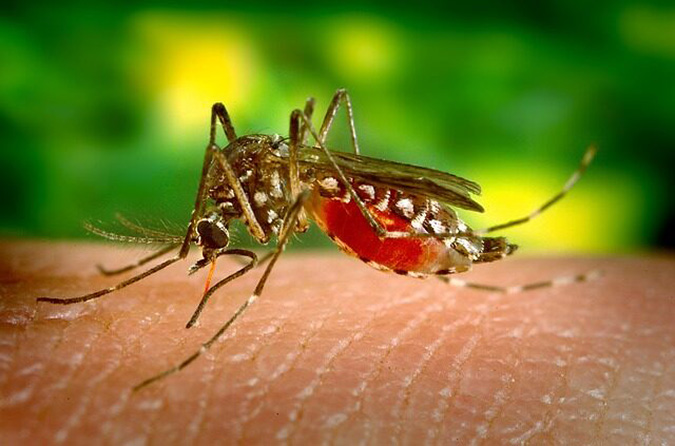
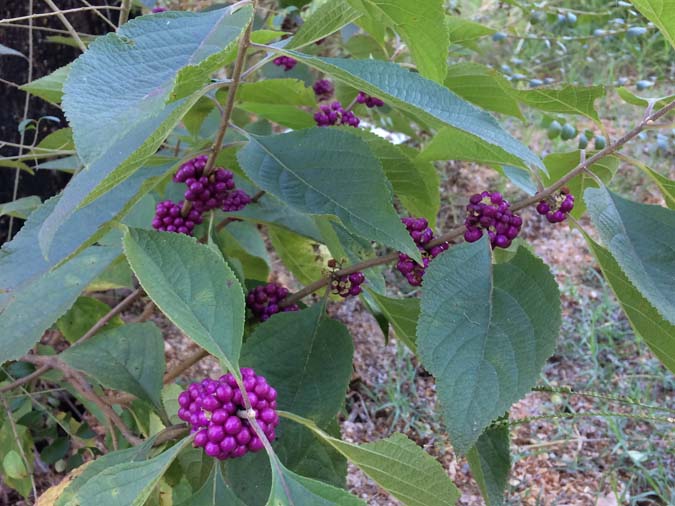
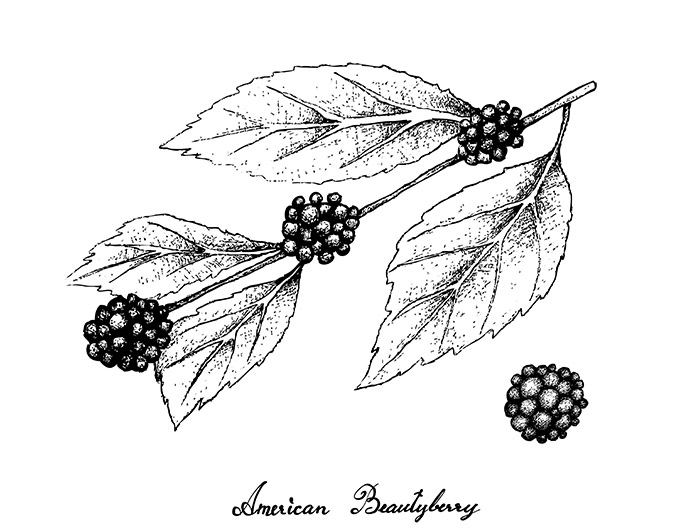
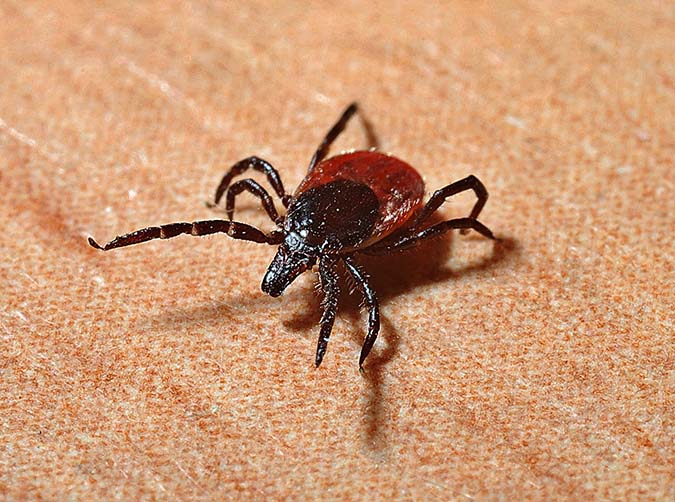
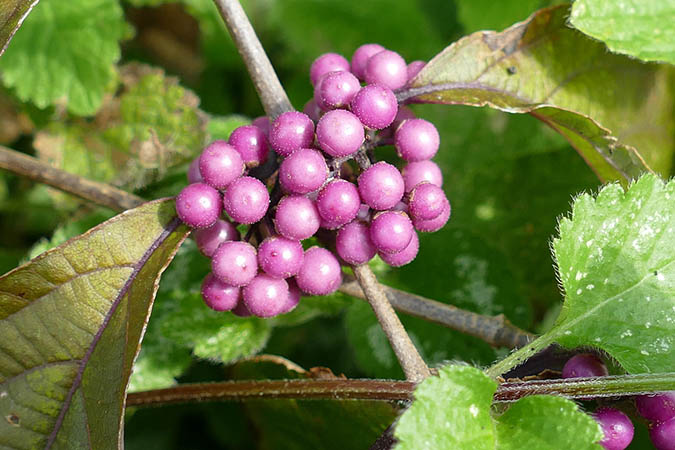







COMMENTS(7)
I am always willing to try anything to win the war against mosquitoes. Thank you
I’m glad to offer some options. Good luck!
I am in Great hopes I can find these Beautyberries. We live in Oklahoma so Maybe.
Sure wish I had beautyberry here!
hi! thanks for posting this! I’ve never seen a recipe where alcohol is MIXED with an oil. what is the resulting consistency like? (i’m talking about the result after soaking in vodka, and then bending plant and vodka with oil in blender). thanks!
So reading this, I think I am interpreting American Beautyberry is not toxic? We are in a suburban situation, raising two nigerian dwarf goats and a handful of chickens in our food forest backyard. Since the goats are dependent upon what we can provide for them, I need to be sure everything we grow is safe for them. My daughter is highly allergic to mosquito bites so providing a natural bug repellant would be wonderful!
saved this! Is there a way to save these to our accounts? If not there should be. I love this website, thank you all for this.